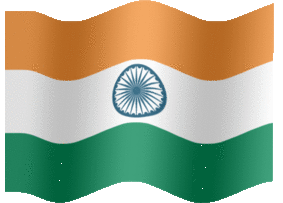A great Today India Celebrates 15th Aug Independence day theme history and song.
we have been believing this day for since last 75, this time 75 times we will celebrate Independence Day. And at the same time, this day is considered an important day in Indian history.
What is 15th August :
August 15 is a very important day for India. Because on this day our Indian country got freedom. Therefore, this day is celebrated as a special festival in the country. The country got independence from British rule on 15 August 1947. Many heroes have contributed significantly in getting this freedom, we have to salute such great people from our hearts.
To share Wishes : https://wishingbox.in/

Theme of Today India Celebrates 15th Aug Independence day history and song :
India Independence Day 2021 Theme: ‘Nation First, Always First’ will reflect on all aspects of the programme — from paintings to flower arrangements
See The Song Lets Play :
Indian 15th Aug Independence Day History :
The history of Indian Independence is a long and chequered one. It was on 15th August, 1947, that the country was officially announced to be an independent nation but it took a seemingly endless struggle, the blood, sweat and endurance of popular as well as millions of faceless Indians who fought unitedly to liberate their nation after suffering British reign for about 200 years.
The 1857 Sepoy mutiny was an important landmark in the history of Indian freedom struggle. This act of rebellion on 29th March 1857 by Indian soldiers in the British army at Barrackpore was the result of various factors. Low wages than their British counterparts, racial discrimination, cultural misunderstanding and above all the news (later dismissed as a rumour) that the packings of the latest cartridges were to be greased with cow and pig fat – the combination of all these issues and more led to the violent Barrackpore uprising. Though the British government suppressed the rebellion, the flame of discontent had been kindled. The hanging of Mangal Pandey, a Hindu soldier of the 34th Native Infantry who participated in the oppositive movement and had shot at his sergeant major on the parade ground, further fanned the fire. On 10th May of the same year, enraged Indian soldiers and even common civilians in Meerut joined hands to protest against the maltreatment meted out to some native soldiers and killed many Britishers living in the cantonment. This war took on a big form which was eventually put down by effective British military might.
To Know Trending : Most powerful country & Top Defence Military system in the world:
Mahatma Gandhi’s famous “Salt March” in 1930 and the “Quit India Movement” in 1942 saw a wave of public support and the expression of common remonstration like never before. All things Western were publicly burnt and thrown away while the use of “khadi”, the homemade cloth, was propogated. The great leader demaded “Purna swaraj” (total freedom” from the British Government. But the Empire was unrelenting and it imprisoned and beat up thousands of Congress leaders as well as civilans who took part in the protests. Even Gandhi himself was not spared. The appeals of the moderate leaders met with little response. Disillusioned at Mahatma Gandhi’s ideals and frustrated at the condescending manner in which the British authority dealt with the Congressmen, Subhas Chandra Bose eventually floated a seperate party, the All India Forward Bloc and launched his own outfit, the Indian National Army(INA), which attempted to use military might against the Empire with grat initial success. The sudden death of Netaji (as Subhas Bose was known to his countrymen) saw the decline and eventual evanescing of his army.
The two successive world wars eventually drained the resources of the British Government to the extent that it found it difficult to manage India. Added to this was the huge popular discontent being expressed repeatedly through words and actions of Indians who wanted to drive the foreigners away from their soil at any cost. Extremist activities as well as non-violent protests and processions were being carried out almost on a daily basis. The wave of popular sympathy that the trial of three INA officers saw, made the British realize that their days in India were numbered.
At last on June 3 1947, Viscount Louis Mountbatten, the last British Governor-General of India, declared that the British would leave the Indian subcontinent but the British Indian Empire was to be split up into a secular India and a Muslim Pakistan. This was because the Muslims felt that their demands were not being represented adequately by the Congress and they feared that they would not be able to enjoy equal opportunities after independence as the Congress, which was supposed to lead the independent nation, was being seen by them as a Hindu political party that would show preference to members of the Hindu community once the country attained liberty. The Muslim League demanded a seperate nation for themselves with the result that the Indian subcontinent was divided into a Muslim Pakistan and a secular India. Pakistan was officially announced to be a seperate nation and given an independent status on 14 August 1947. At midnight, on 15 August 1947, India was declared to be an independent nation by her first Prime Minister Pandit Jawaharlal Nehru.
Our Sponsored :
